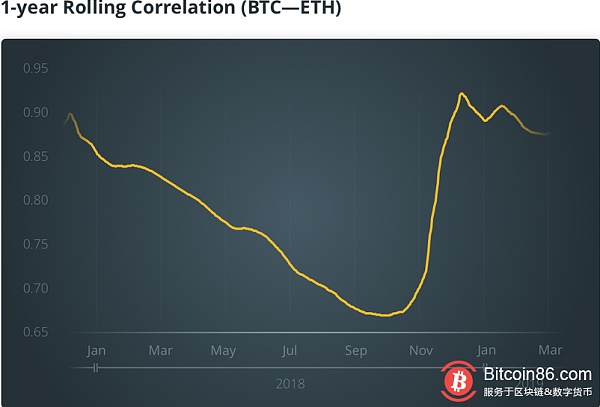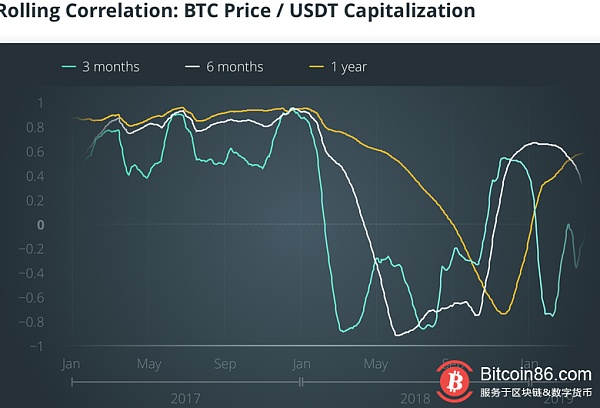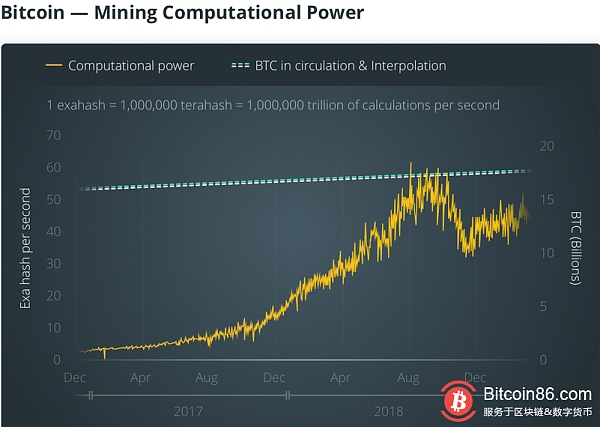Bitcoin Bubble Autopsy Report


- There are at least three ways to completely destroy Bitcoin.
- Russia begins cryptocurrency technology test
- Bitcoin can't be the future of cryptocurrencies?
Among all tokens, Ethereum should be specifically mentioned. According to the size of capital, Ethereum is the second largest digital currency. Ethereum was used as a technology platform to promote the first token release (ico). The ICO finances suspected weak or suspicious projects by collecting financial resources that are not protected by regulatory agencies. Most of these initiatives undermine economic resources without exception, or prove to be real scams, which greatly deprive investors of their defensive capabilities. .
In hindsight, the price movement during the Bitcoin bubble was closely related to its similar products in history, starting with the tulip bubble of 1637, the bubble of the South China Sea company, and the recent burst of the Internet bubble from 1999 to 2000.
After a modest rise, followed by a vertical price increase of about 9 months, the final crazy buying appeared in December 2017 – starting with an already high base, the price rose this month. More than one. In January 2018, it touched on a classic price "double peak", which coincided with the peak of global stock markets and the peak of the central bank's release of liquidity to the global economy (this is not surprising). Since then, the price of Bitcoin has barely been interrupted, the crash has been very fast, and there has been a brief recovery during the period, but the relative extremum has been declining.
Where is the bottom of the price?
On this issue, we must consider that Bitcoin, its imitations, and other digital currencies do not have their own intrinsic value. Prices are only determined by the supply and demand relationship in the market; due to the structural constraints of bitcoin and settlement platforms, these are usually highly illiquid prices, which can vary by hundreds of euros from each other and cannot be effectively arbitraged between different markets. . Therefore, determining fair value is very difficult.
Therefore, for traders trading in these markets, technical analysis is the only tool to explain price movements. This means that the price dynamics determined by the collective action of the trader sometimes follow the predictive model of technical analysis.
In this overall situation, it is necessary to separate the main drivers of Bitcoin and other tokens. In the period of rapid price increase from March to December 2017, the role of stable currency has always dominated.
Stablecoin is a digital currency linked to a fiat currency (such as the US dollar or the euro) at a fixed exchange rate. Its existence makes sense, because at present, the conversion between legal tender and digital currency is still slow and cumbersome, because it needs to transfer funds from traditional banks to encrypted exchanges through the payment system of cross-border banks, and these systems Billing may take a few days.
Conversely, the conversion between digital currencies is done in an instant, and traders can protect themselves by stabilizing the currency, protected from the very high volatility of bitcoin and other tokens. Of course, a stable currency does not equal $1 because it is not freely convertible, although the company itself has consistently declared a dollar reserve that corresponds to the amount of stable currency issued and circulated on the exchange. However, for traders, the function of the stable currency is the same as the US dollar, so it is not important whether it is fully or partially convertible.
In April 2019, at least eight different companies in the market provided stable currency services, but in 2017, Tether basically monopolized the market, seriously affecting the price movements of various exchanges, University of Austin, Texas (University of Austin) A statistical analysis by Texas, which proves this, is largely related to the fact that companies that issue Tether are actually controlled by Bitfinex, Asia's largest crypto exchange.


By studying these data (see above), we can observe how the price behavior of Bitcoin (and other altcoins) is completely related to the exchange's new tether during the bubble's outbreak. As the above research shows, the Bitfinex exchange has artificially contributed to the frantic purchase of digital currencies by issuing more and more stable coins, which is statistically possible. At a stage where prices are exponentially increasing, it is a profitable strategy for issuers to have stable dollar coverage in full US dollars. In fact, speculators can buy digital currency with new stable currency, and hope to resell these tokens at a higher price in the future and supplement the dollar reserve. In an era of rising prices, the media's hype to digital currencies has been boosted, attracting retail investors who lack experience in digital assets, and they often don't know the huge risks associated with the end of the speculative bubble.
Despite the recent price hike, the long-term price contraction may not be completed, which is caused by two main factors at two different time periods. From January to April 2018, demand-driven purchases fell, which determined the escape of panic speculative investors who were highly exposed to losses at a very high price. In this classic panic selling, it can be seen that the exchange also lacks support for the growing stable currency (Tether). In fact, since February, the growth of Tether in circulation has slowed and tended to flatten; this suggests that in the event of a market downturn, the strategy of issuing unsecured stable currencies is no longer profitable.
In June 2018, bitcoin prices apparently bottomed out at around $6,000, but this price is still more than 10 times the price at the beginning of 2017. At this point, most speculative investors have disappeared, and as the transaction diminishes, the volatility of digital currencies has fallen dramatically (see chart below). Many analysts believe that at that stage, $6,000 is the minimum necessary to offset the energy costs of miners. Prior to this, the ever-expanding number of miners to meet rising production costs was a force supporting the rise in the price of digital assets.
However, this fragile balance does not last. In November 2018, there was another hard fork between digital currencies, creating a new bitcoin clone without major innovation. This triggered a price earthquake that broke the already achieved fragile equilibrium. . In this deteriorating framework, the decisive factor for falling prices seems to be driven by buying and related to digital currency mining. In fact, a considerable number of miners suddenly shift their computing power (or hash rate) from bitcoin to bitcoin's forked currency, hoping to get risk-free profits from the forked currency. It happened several times.
But at the end of 2018, things changed: the abnormal transfer of computing power took support for Bitcoin and dragged the price of digital assets into a spiral, including the forked currency that miners invested heavily. Part of the miners have been operating at a loss and have been driven out of the market, causing Bitcoin's overall computing power to decline for the first time in history, and the Bitcoin network's computing power has collapsed by 50% in just a few weeks (see chart below). Bitcoin and various tokens have seen a free fall in price, with a loss of about 70%.

In 2019, the game of "Darwin's Choice – Survival of the Fittest" in the mining business circle seems to have stopped, which can be proved by the recovery of the overall network hash rate – although the recovery rate is milder. The Bitcoin protocol provides an automated monitoring mechanism that tends to reduce mining costs as network computing power declines. This cyclical adjustment allows marginal operators to return to the market at a lower cost.
Earlier this year, the value of cryptocurrency slowly picked up, but what was really surprising was that on April 2, in just one hour, Bitcoin soared nearly $1,000, more than $5,000 – since then, A new resistance level lasted for a few weeks.
It is unclear what the reason for this jump is (perhaps an algorithm-generated instruction, or a liquidity contraction in Bitcoin derivatives that causes market makers to be forced to buy). After all, many analysts have recently predicted that the stock market will rise sharply in the short term, and it is not important to know the trigger event. The real question is whether the market is returning to the bull market model. Several factors support a positive answer: a stable recovery of the stable currency market value, as well as the loose monetary policy of central banks and related global uncertainties (Libya crisis, trade disputes, Brexit problems and upcoming EU elections) , increasing the attractiveness of cryptocurrencies.
In view of the slow recovery of investor interest, 2019 may become a new starting point for digital currency. Investment in technology innovation and infrastructure has never stopped, and institutional investors’ interest has surpassed short-term speculative fanaticism. Regulators are also intervening in the restructuring of these frontier markets.
The winter of cryptocurrencies may be shorter than expected.
Source: Nuclear Finance
We will continue to update Blocking; if you have any questions or suggestions, please contact us!
Was this article helpful?
93 out of 132 found this helpful
Related articles
- European opinion poll results: Bitcoin will be replaced within 10 years
- Used cars are refurbished, consumption is opaque… Can the blockchain solve the problem of car fraud?
- The future of the banking industry is on the blockchain?
- Can the 3 big Leite coins reach $100 in the second quarter of 2019?
- Bitcoin price forecast: BTC will reach 700,000 US dollars?
- Bitcoin will absorb 1.5 billion yuan or will continue to rebound IOTA 飙 14% led the rise
- April 29 madman market analysis: blockchain news index growth digital currency has not increased?




